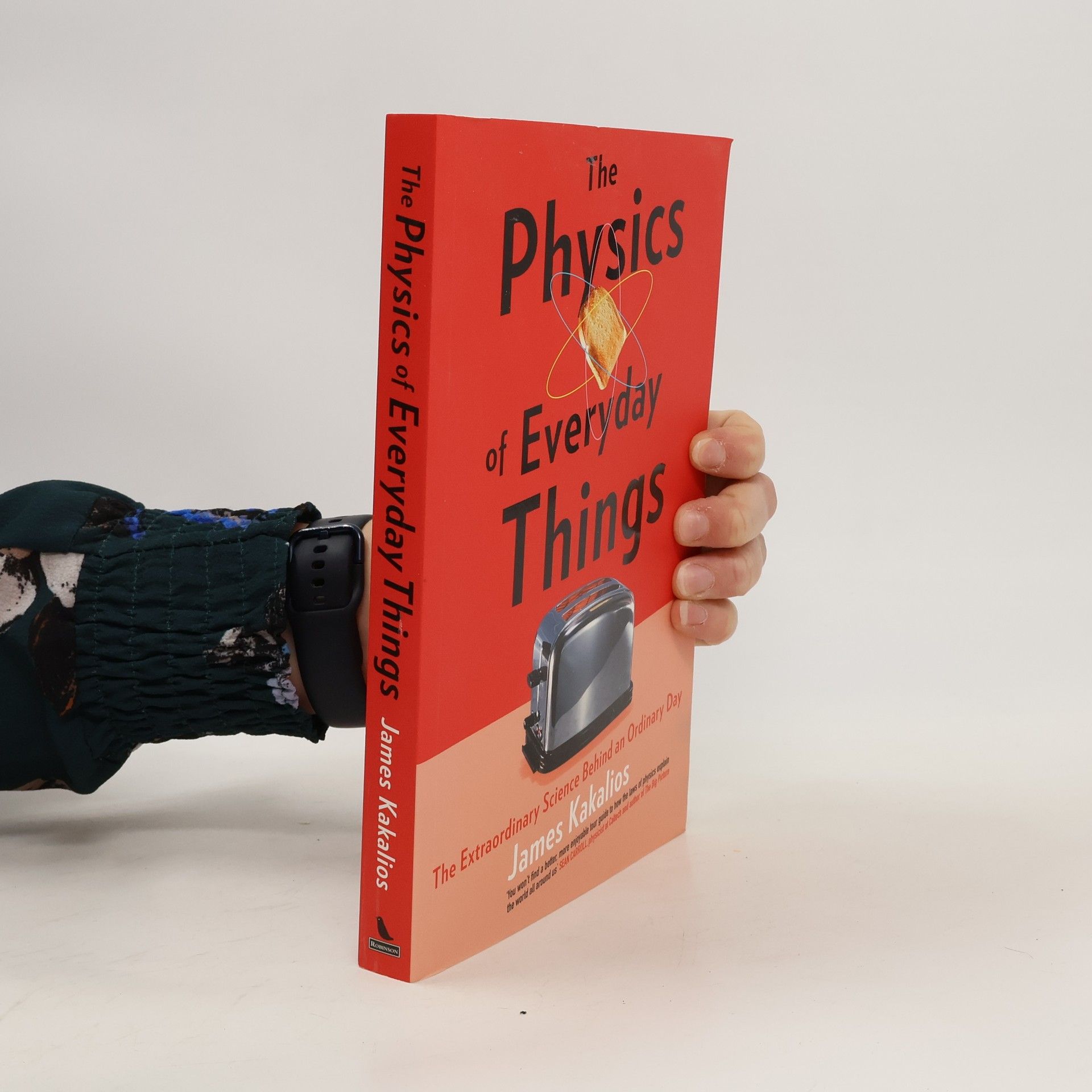POPULAR SCIENCE. Professor James Kakalios shows that comic-book heroes and villains get their physics right more often that you would think. Learn what the physics of forces and motion can reveal about Superman's strength, and what would happen if the Atom could travel on an electron through a phone line. Exploring everything from thermo-dynamics to sold state physics, and relating the physics in comic books to such real-world applications as microwave ovens and drivers' air bags, "The Physics of Superheroes" shows how comic books have often been ahead of science in explaining cutting-edge physics, and will make both comic-book fans and physicists exclaim, 'Excelsior!'
James Kakalios Boeken
James Kakalios is een vooraanstaand natuurkundige die de wereld van stripboekhelden verkent door de lens van de fundamentele natuurkunde. In plaats van zich te concentreren op traditionele natuurkundige onderwerpen, duikt zijn populairwetenschappelijke werk in de wetenschappelijke principes die de buitengewone vaardigheden van superhelden zouden kunnen ondersteunen. Zijn boeiende aanpak motiveert studenten om dieper na te denken over natuurkunde, met behulp van fascinerende voorbeelden uit stripverhalen. Kakalios suggereert dat de sociologie en het gedrag van personages in stripboekuniversums vaak onrealistischer zijn dan de natuurkundige wetten die hun krachten mogelijk maken.





The Amazing Story of Quantum Mechanics
- 336bladzijden
- 12 uur lezen
In the pulp magazines and comics of the 1950s, it was predicted that the future would be one of gleaming utopias, with flying cars, jetpacks, and robotic personal assistants. Obviously, things didn't turn out that way. But the world we do have is actually more fantastic than the most outlandish predictions of the science fiction of the mid-20th century. The World Wide Web, pocket-sized computers, mobile phones and MRI machines have changed the world in unimagined ways. In 'The Amazing Story of Quantum Mechanics', James Kakalios uses examples from comics and magazines to explain how breakthroughs in quantum mechanics led to such technologies. The book begins with an overview of speculative science fiction, beginning with Jules Verne and progressing through the space adventure comic books of the 1950s. Using the example of Dr. Manhattan from the graphic novel and film Watchmen, Kakalios explains the fundamentals of quantum mechanics, and describes nuclear energy via the hilarious portrayals of radioactivity and its effects in the movies and comic books of the 1950s. Finally, he shows how future breakthroughs will make possible ever more advanced medical diagnostic devices - and perhaps even power stations on the moon that can beam their power to earth.
The Physics of Everyday Things
- 256bladzijden
- 9 uur lezen
Physics professor, bestselling author and dynamic storyteller James Kakalios reveals the mind-bending science behind the seemingly basic things that keep our daily lives running, from our smartphones and digital 'clouds' to x-ray machines and hybrid vehicles.
The physics of everyday things. The extraordinary science behind an ordinary day
- 245bladzijden
- 9 uur lezen
Physics professor, bestselling author, and dynamic storyteller James Kakalios reveals the mind-bending science behind the seemingly basic things that keep our daily lives running, from our smart phones and digital “clouds” to x-ray machines and hybrid vehicles. Most of us are clueless when it comes to the physics that makes our modern world so convenient. What’s the simple science behind motion sensors, touch screens, and toasters? How do we glide through tolls using an E-Z Pass, or find our way to new places using GPS? In The Physics of Everyday Things, James Kakalios takes us on an amazing journey into the subatomic marvels that underlie so much of what we use and take for granted. Breaking down the world of things into a single day, Kakalios engages our curiosity about how our refrigerators keep food cool, how a plane manages to remain airborne, and how our wrist fitness monitors keep track of our steps. Each explanation is coupled with a story revealing the interplay of the astonishing invisible forces that surround us. Through this “narrative physics,” The Physics of Everyday Things demonstrates that—far from the abstractions conjured by terms like the Higgs Boson, black holes, and gravity waves—sophisticated science is also quite practical. With his signature clarity and inventiveness, Kakalios ignites our imaginations and enthralls us with the principles that make up our lives.